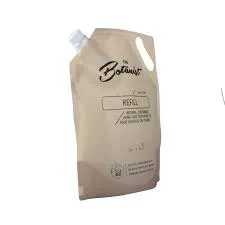Best Practices for Freezing and Packaging Foods Effectively
How Should Foods Be Packaged for the Freezer?
Freezing food is a great way to preserve its flavor and nutritional value, extending its shelf life significantly. However, proper packaging is crucial to ensure that foods maintain their quality while in the freezer. Here are some essential tips on how to package foods for freezing effectively.
1. Choose the Right Packaging Materials
The first step in preparing food for the freezer is selecting appropriate packaging materials. Common options include aluminum foil, freezer bags, plastic wrap, and airtight plastic containers. Avoid using regular plastic bags or containers that are not specifically designed for freezing, as they may not hold up well under low temperatures.
Freezer bags are particularly effective as they are made to withstand extreme cold and come with a zip-top closure to prevent air from entering. Airtight containers also work well, especially for liquids or larger items. When using aluminum foil, wrap the food tightly to minimize air exposure, which can lead to freezer burn.
2. Remove Air
Air is the enemy of frozen food. It can cause freezer burn, a condition that dehydrates the surface of the food, leading to loss of flavor and texture over time. To combat this, remove as much air as possible from the packaging. For freezer bags, squeeze out excess air before sealing. If using containers, fill them to the top, allowing very little headspace for air.
3. Portion Your Food
Before freezing, consider portioning your food into meal-sized servings. This practice not only makes it easier to defrost only what you need but also helps to avoid waste. For example, if you’re freezing soup, divide it into single servings and store each portion in separate containers or bags. Label each pack with the content and date, so you can keep track of what you have stored and how long it’s been in the freezer.
4. Avoid Freezing Foods Too Hot
how should foods be packaged for the freezer

When freezing cooked food, allow it to cool to room temperature before putting it in the freezer. Placing hot food directly into the freezer can raise the temperature inside, potentially compromising the quality of other stored foods and increasing the energy consumption of the freezer.
If you’re freezing vegetables, blanching them first is recommended. Blanching involves boiling the vegetables for a short time before quickly cooling them in icy water. This process helps to preserve color, texture, and nutritional value while also killing off enzymes that can affect quality. Once blanched, drain and cool the vegetables completely before packaging them for freezing.
6. Label and Date Your Packages
Always label your food packages with the contents and the date you froze them. This practice helps ensure that you use older items first, promoting a first-in, first-out system. It also aids in organizing your freezer, reducing the time spent searching for items.
7. Keep Your Freezer Organized
Finally, keep your freezer organized to make it easier to find food when you need it. Use bins or baskets to categorize items, such as meats, vegetables, or meals. Regularly check your inventory and rotate items, so nothing gets forgotten in the back of the freezer.
Conclusion
Proper packaging is paramount to successfully freezing foods. By choosing suitable materials, removing air, portioning, cooling foods correctly, blanching vegetables, labeling packages, and organizing your freezer, you can ensure that your frozen food remains as fresh and delicious as possible. With these tips in mind, you can enjoy home-cooked meals at your convenience while minimizing waste.













